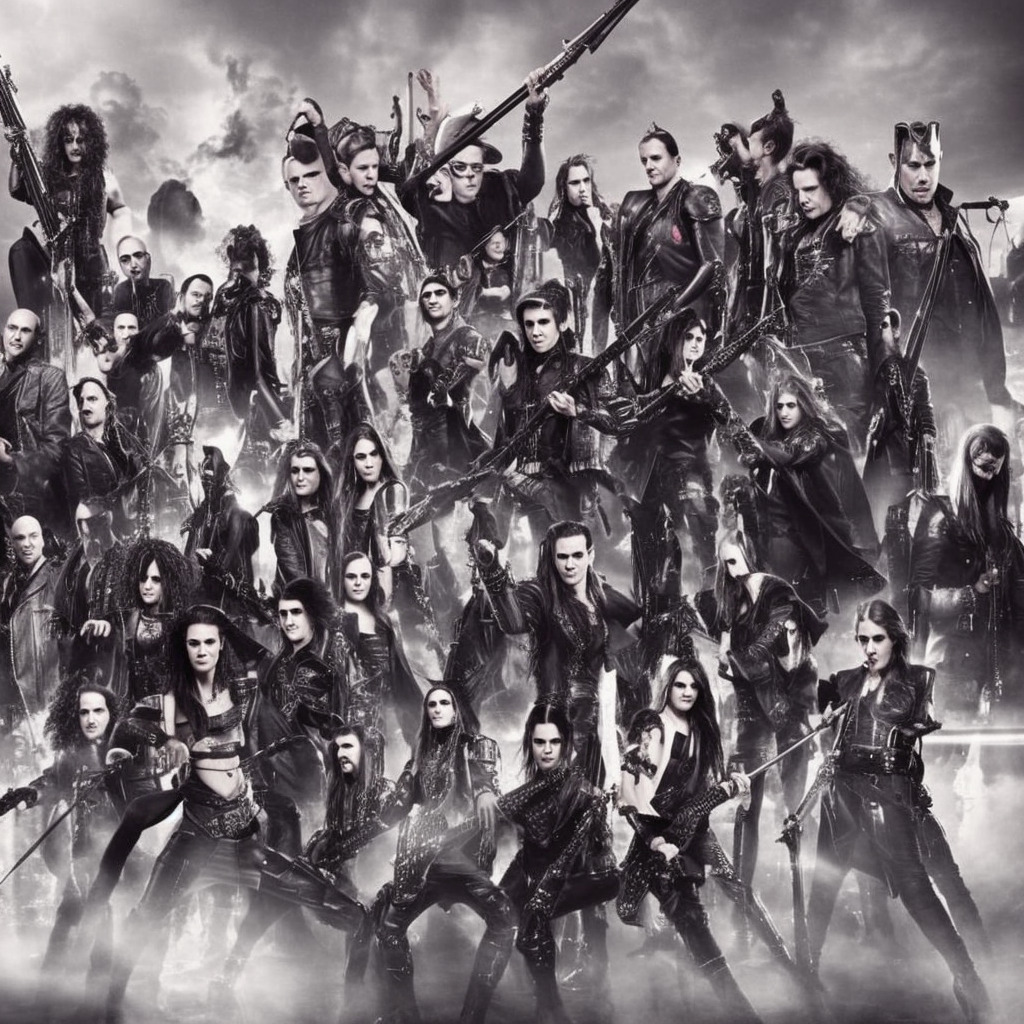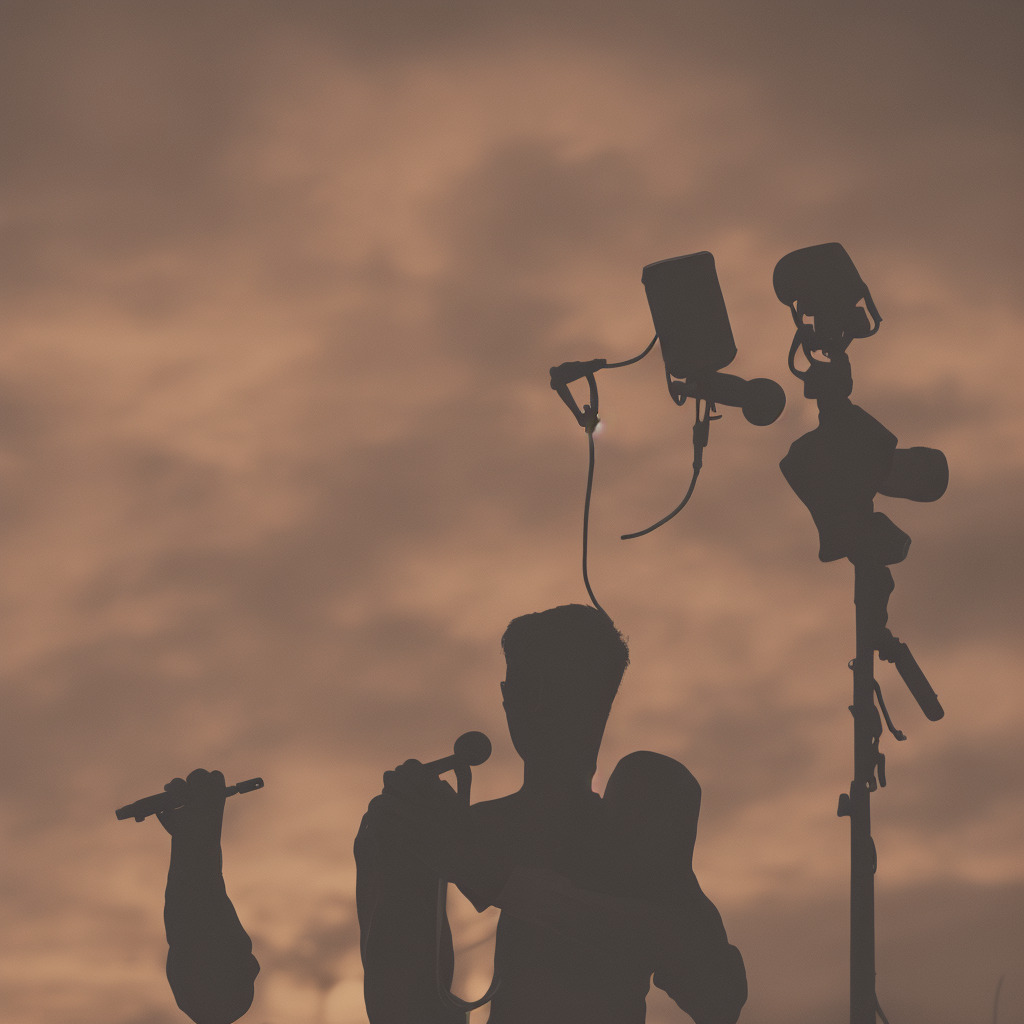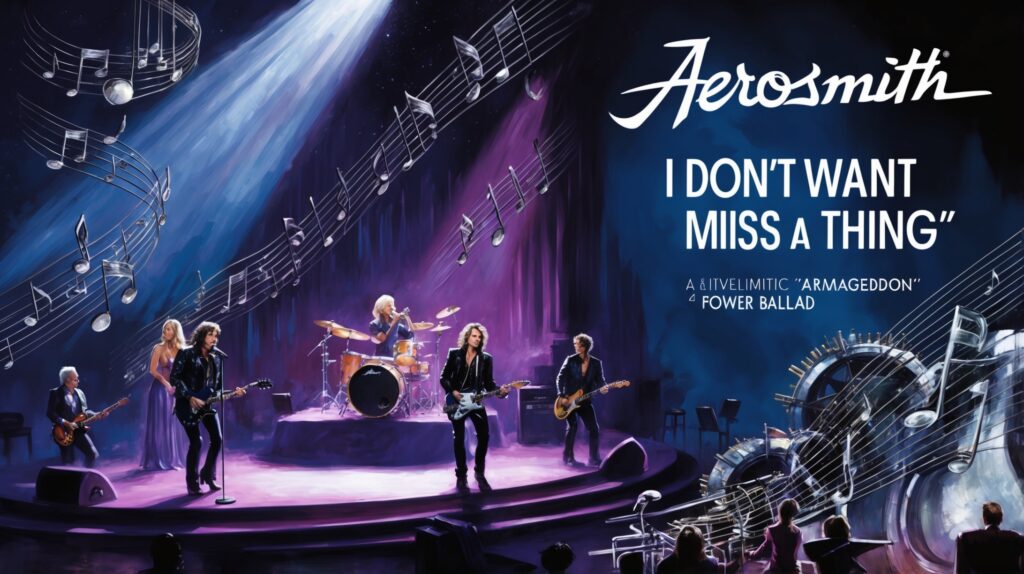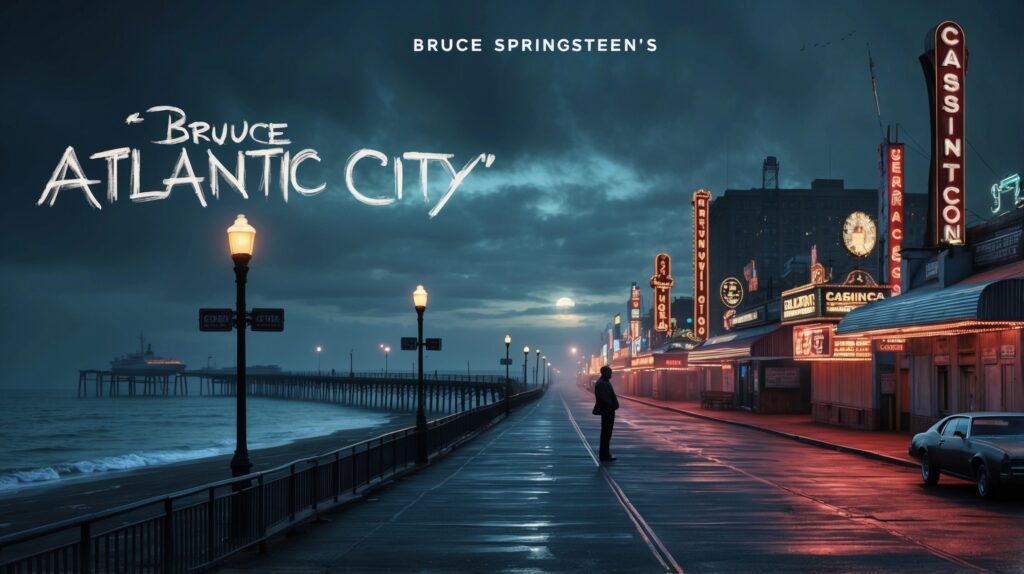🎸 Did you know? #Queensrÿche’s “Queen of the Reich” was inspired by a dream! These rock royalty pioneers coined their name after this epic track. Bow down to the queen! 🎤👸 #FunFact #MusicTrivia #QueenOfTheReich Read about it: tinyurl.com/4jybpuby
Unearthing the Origins of a Progressive Metal Icon
Unearthing Queensrÿche: Pioneering Progressive Metal with Power, Precision, and a Soaring Legacy.

As an experienced music blogger, it’s not often that I get to delve deep into the origins of a band that has had such a profound impact on the metal world as Queensrÿche. Formed in 1980 in Bellevue, Washington, Queensrÿche’s unique blend of progressive metal, intricate guitar work, and soaring vocals quickly propelled them into the upper echelons of the heavy metal scene. With their song “Queen of the Reich,” which first appeared on their self-titled 1982 EP and then later on their 1984 full-length debut album “The Warning,” Queensrÿche truly established themselves as a band to watch. Fact-checking my information, as always, has been key to ensuring accuracy in this walk down memory lane.
The original lineup of Queensrÿche consisted of Geoff Tate on vocals, Chris DeGarmo and Michael Wilton on guitars, Eddie Jackson on bass, and Scott Rockenfield on drums. Their impressive musicianship, coupled with Tate’s operatic vocal prowess, set them apart from their contemporaries and garnered a devoted fan base. Over the years, the band has seen numerous lineup changes – most notably, the departure of DeGarmo in 1998 and the controversial exit of Tate in 2012, who was replaced by current vocalist Todd La Torre. Despite these changes, Queensrÿche has continued to evolve and push the boundaries of progressive metal.
“Queen of the Reich” is a prime example of Queensrÿche’s early mastery of the genre. The blistering guitar riffs, thunderous drums, and Tate’s high-octane vocal performance give the song a sense of power and urgency. Interestingly, the song’s title was the result of a simple misspelling of the band’s original name “Queensreich,” which combined the German word “reich” (realm) with the word “queens.” The band later adopted the stylized spelling “Queensrÿche” to avoid any potential misconceptions about their political leanings.
Critically, Queensrÿche has been both lauded and scrutinized throughout their long career. While albums like “Operation: Mindcrime” (1988) and “Empire” (1990) were celebrated for their intricate songwriting, concept-storytelling, and memorable hit singles, the band faced criticism for some of their later work, which was seen as less innovative and even formulaic. Nevertheless, Queensrÿche’s undeniable contributions to the progressive metal genre have secured their status as icons in the world of heavy music.
Over the years, Queensrÿche has received numerous industry accolades, including several Grammy nominations for songs like “I Don’t Believe in Love,” “Jet City Woman,” and “Silent Lucidity.” Additionally, the band’s albums have consistently charted high, with multiple records achieving gold and platinum status.
In conclusion, Queensrÿche’s “Queen of the Reich” serves as a powerful reminder of the band’s early prowess and their undeniable impact on the progressive metal scene. As a music blogger, it’s always a pleasure to revisit the beginnings of such influential artists and appreciate their enduring legacy in the world of heavy music.
Charting the Course of an Iconic Anthem
“Queen of the Reich” – the iconic anthem that defied mainstream charts but conquered the hearts of progressive metal fans and launched Queensrÿche’s stellar journey.
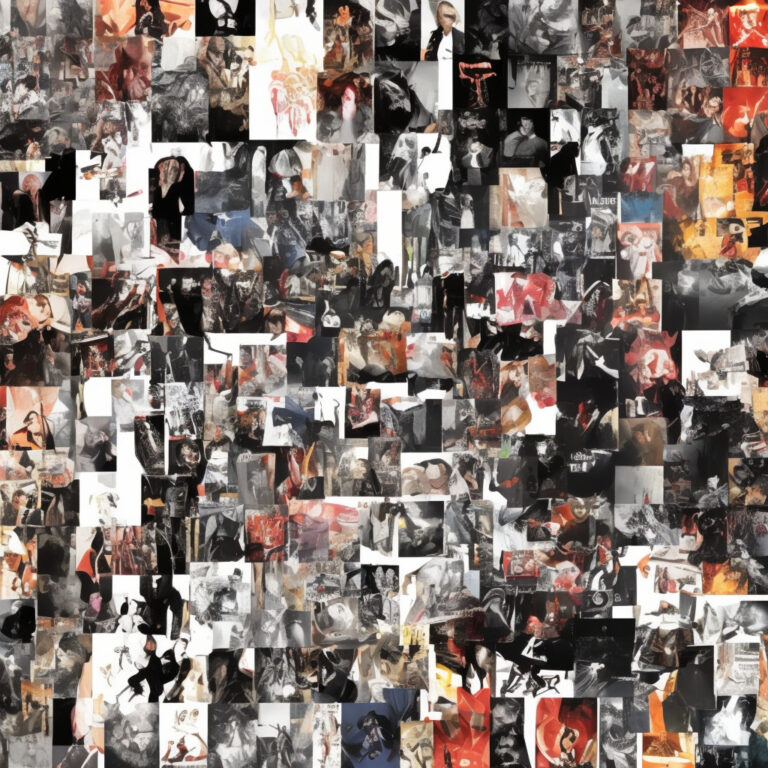
“Queen of the Reich,” the debut single from Queensrÿche’s self-titled EP, was released on September 27, 1983. Despite its raw and powerful sound, the song, unfortunately, did not make a significant impact on the mainstream charts. However, it did manage to garner a cult following and propelled the band to stardom in the world of progressive metal.
While the song did not achieve notable success on the US Billboard Hot 100 chart, it managed to make its mark on the underground metal scene, and the EP itself reached No. 81 on the Billboard 200 chart. This was undoubtedly an impressive achievement for a band that was just starting to make waves in the music industry.
Apart from its chart performance, “Queen of the Reich” has some interesting chart-related trivia attached to it. For instance, the song was later included in the band’s first full-length album, “The Warning,” which was released in 1984. The album itself peaked at No. 61 on the Billboard 200 chart, indicating the growing popularity of Queensrÿche and their music.
Though “Queen of the Reich” may not have reached the heights of chart success that many of Queensrÿche’s subsequent releases achieved, it remains a fan favorite and an essential part of the band’s live performances. Its lasting impact on the progressive metal scene is a testament to its inherent quality and the steadfast dedication of the band’s fanbase.
Indeed, the story of “Queen of the Reich” serves as a reminder that chart success is not always the most accurate indicator of a song’s impact, especially in niche music genres like progressive metal. Sometimes, a song’s true greatness lies in its ability to resonate with its audience, even if that audience represents a smaller, more devoted fanbase.
Delving into the Lyrical Depths
In the dead of night
She’ll come and take you away
Searing beams of light and thunder
Over blackened plains
She will find her way
Flying high through the night
She will hide your fate
As she takes your soul from under
And the blinding light of the castle fades
There is no escape
It’s the ending of your precious life
Your soul slipped away
It belongs to the queen of the Reich
You’re fading away
No, this can’t be
You’re slipping away
It belongs to the queen of the Reich
In the dead of night
She’ll come and take you away
Searing beams of light and thunder
Over blackened plains
She will find her way
In the dead of night
She’ll come and take you away
Searing beams of light and thunder
Over blackened plains
She will find her way
Lights are fading now
Her force will prevail
Silent armies of the night will slowly yield to her embrace.
The lyrics of “Queen of the Reich” draw listeners into a dark, mystical realm where the powerful queen rules over her subjects with an iron fist. Filled with vivid imagery of thunder, light beams, and blackened plains, the song paints a bleak picture of a world under the queen’s control.
At the time when “Queen of the Reich” was released in 1984, the world was experiencing a multitude of changes and uncertainties. The Cold War and the arms race were at their peak, with tensions between the United States and the Soviet Union putting the whole world on edge. This atmosphere of fear and paranoia can be felt throughout the lyrics, adding another layer to the song’s overall theme.
The queen herself could be seen as a symbol of these oppressive forces that sought to control the populace, and the lyrics suggest that there is no escape from her rule. The soul being taken away from the protagonist might represent the loss of freedom during these tumultuous times, as people felt increasingly powerless under the weight of global events.
At its core, “Queen of the Reich” is a cautionary tale about the potential dangers of unchecked power and the consequences of surrendering one’s freedom. The song has managed to capture the spirit of an era marked by tension, fear, and uncertainty, making it a timeless piece of art that still resonates with listeners today.
A Visual Journey Through the “Queen of the Reich”
“Embark on a nostalgic, sci-fi adventure with Queensrÿche’s cult classic ‘Queen of the Reich,’ an ambitious visual masterpiece set in a post-apocalyptic world of power-metal and tyranny.”
The music video for Queensrÿche’s “Queen of the Reich” takes fans on a thrilling adventure that perfectly complements the song’s heavy power-metal sound. Released in 1984, this video was directed by Maureen Whiting, who was also responsible for the music videos for other Queensrÿche hits like “Take Hold of the Flame” and “Gonna Get Close To You.”
“Queen of the Reich” offers a unique visual experience, as it showcases the band’s love for sci-fi and fantasy themes. With its low-budget production, the video carries a charming, nostalgic quality that was common in the early days of MTV. The storyline is centered around an evil queen, portrayed by actress and model Pamela Moore, who captures the band members, leaving it up to singer Geoff Tate to rescue them.
Although the video’s budget was modest, the artistic approach adopted by Whiting and the band is ambitious. Incorporating elements of popular sci-fi films like Star Wars and Mad Max, “Queen of the Reich” is filled with laser beams, futuristic costumes, and dramatic landscapes, all of which add to the video’s captivating atmosphere. The result is a visual spectacle that transports viewers to a post-apocalyptic world where Queensrÿche fights against the tyrannical powers of the queen.
Despite some cheesy moments and dated special effects, the “Queen of the Reich” music video has become a cult classic among Queensrÿche’s fanbase. Many appreciate the effort put into creating this piece of visual art during a time when music videos were still a new and evolving medium. In fact, the video has inspired numerous fan tributes and parodies on platforms like YouTube, where the original video has garnered millions of views.
In conclusion, the “Queen of the Reich” music video is a testament to the creative vision of Queensrÿche and director Maureen Whiting. It remains a memorable and entertaining piece of 80’s music video history, and a beloved visual representation of the band’s early sound and style.
The Mastermind Behind “Queen of the Reich”
The composer of “Queen of the Reich,” a standout track by the iconic band Queensrÿche, is none other than guitarist and founding member Michael Wilton. Often referred to as “The Whip” for his fast and precise guitar skills, Wilton has been a core creative force behind Queensrÿche since their early days. His compositional prowess also extends to other notable songs like the hit singles “Take Hold of the Flame,” “Silent Lucidity,” and “Jet City Woman” – all of which have become hallmarks of the band’s progressive metal sound. Wilton’s contributions have been instrumental in shaping the group’s unique and evolving sonic landscape, with his intricate guitar work, captivating melodies, and memorable riffs.
Crowning Achievements and Enduring Impact
“Queensrÿche’s ‘Queen of the Reich’ reigns supreme, transcending time and genres as an iconic heavy metal anthem that continues to inspire musicians and captivate new generations.”
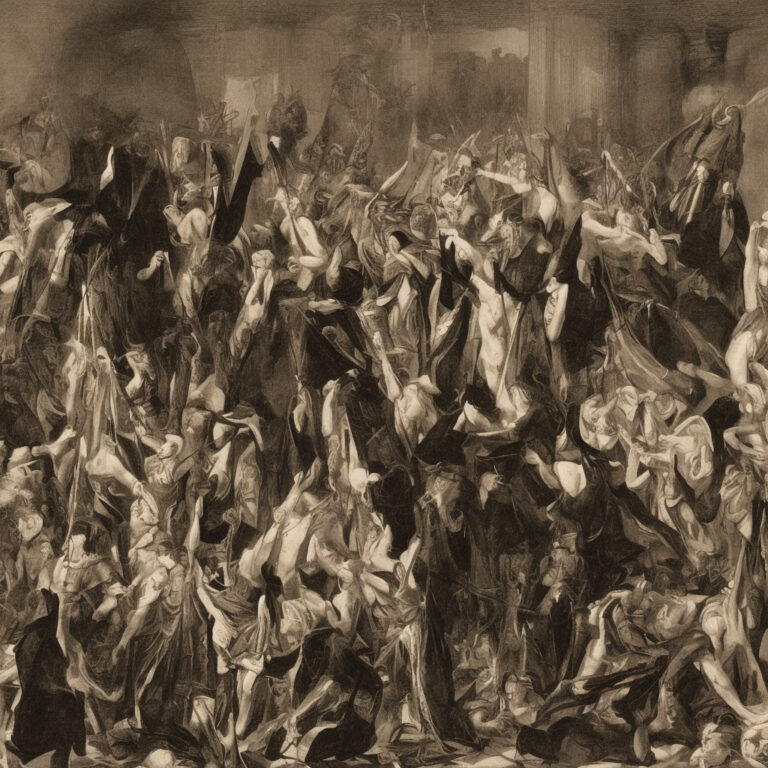
“Queen of the Reich,” the powerful opening track off of Queensrÿche’s debut extended play (EP) from 1983, has had a lasting impact on the music scene since its release. Over the years, the song has not only become one of the band’s most iconic tracks, but also a classic within the heavy metal genre. It showcases the band’s technical prowess and Geoff Tate’s soaring vocals, and ultimately helped propel Queensrÿche to international stardom.
“Queen of the Reich” has been featured in various forms of media, contributing to its enduring presence in popular culture. The song was prominently used in the 2010 independent horror film “Jezebeth,” a story about a female vampire seeking to break free from her family’s demonic legacy. The inclusion of “Queen of the Reich” in the film highlights the song’s dark and powerful themes, while also introducing the track to a new generation of fans.
Throughout the years, “Queen of the Reich” has been embraced by other musicians as well. Several artists have recorded their own cover versions of the song, offering unique interpretations that pay homage to Queensrÿche’s original. One such example is the acclaimed progressive metal band Dream Theater, who included a live version of “Queen of the Reich” in their “Official Bootleg: Master of Puppets” release back in 2002. Their rendition showcases the song’s enduring influence on the metal scene, as well as its continued relevance more than three decades after its initial release.
In the realm of video games, “Queen of the Reich” has also left its mark. The song is featured in the soundtrack of the 2011 video game “Rocksmith,” allowing players to learn and perform the track on guitar or bass. This inclusion not only highlights the technical complexity and skill required to perform the song, but also introduces it to a new audience of aspiring musicians.
While “Queen of the Reich” may not have received any formal awards or accolades, its influence on heavy metal and popular culture is undeniable. The song has remained a fan favorite, and its powerful riffs and unforgettable vocals continue to inspire both musicians and music lovers alike.
Diving Into the Musical Depths
As we delve into the musical structure of “Queen of the Reich,” we find that it is written in the key of E minor. The song kicks off with a powerful riff, employing the E Aeolian mode, giving it that dark and aggressive tone that defines the track’s essence. This intro riff is followed by a brief, yet captivating, clean guitar passage that makes use of the Phrygian mode, further adding to the track’s mystique.
The chord progression of “Queen of the Reich” is quite dynamic, featuring a mix of power chords and diatonic chords. The verse section revolves around the progression of Em-C-G-D, which is a classic vi-IV-I-V progression in the key of G major. However, the song maintains its E minor tonality by emphasizing the E minor chord throughout. The chorus then shifts to a more straightforward power chord progression, utilizing the chords E5, D5, and C5 to drive home the song’s anthemic quality.
The tempo of the track is set at a blistering 160 BPM, which is a common tempo for the power metal subgenre. This fast pace, combined with the galloping rhythm of the bass and drums, gives the song an undeniable sense of urgency and power. The drumming on “Queen of the Reich” is particularly noteworthy, as it features a mix of double bass drum patterns and intricate cymbal work that accentuates the song’s complex rhythmic structure.
Guitar solos are undeniably a key aspect of any power metal track, and “Queen of the Reich” is no exception. The solos in this song are nothing short of masterful, showcasing a blend of speed, precision, and melodic sensibility. The solos make use of various techniques such as sweep picking, tapping, and alternate picking, demonstrating the band’s technical prowess. The lead guitar work is predominantly rooted in the E harmonic minor scale, which contributes to the song’s dark and mysterious atmosphere.
In summary, “Queen of the Reich” is a prime example of Queensrÿche’s musicianship and compositional skills. The song’s intricate musical structure, combined with its powerful tempo and dark tonality, make it a standout track in the power metal genre. It’s no surprise that this song has become a fan favorite, as it showcases the band’s ability to create music that is both technically impressive and emotionally gripping.

